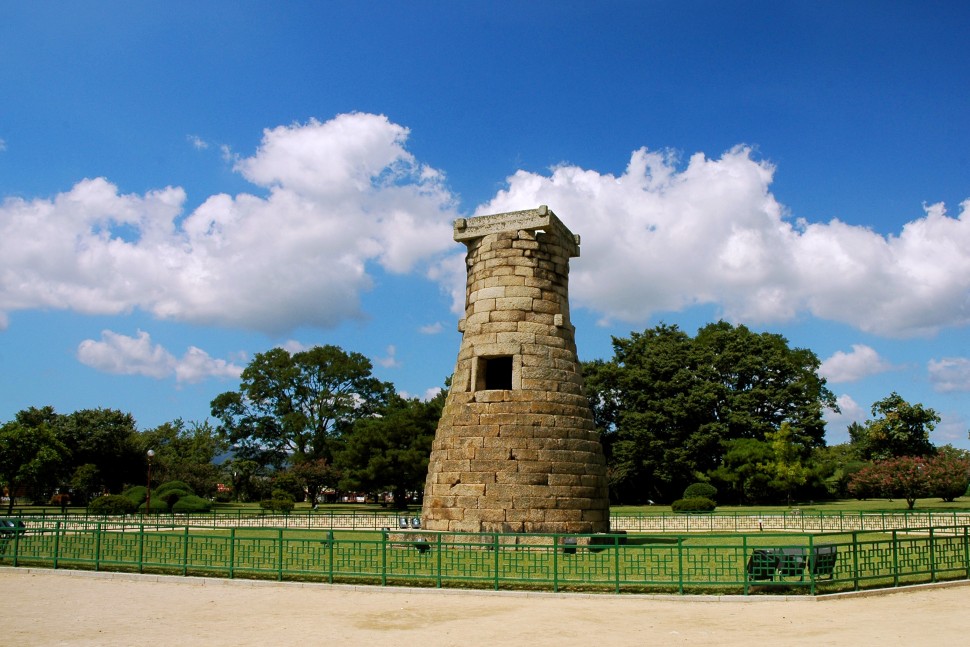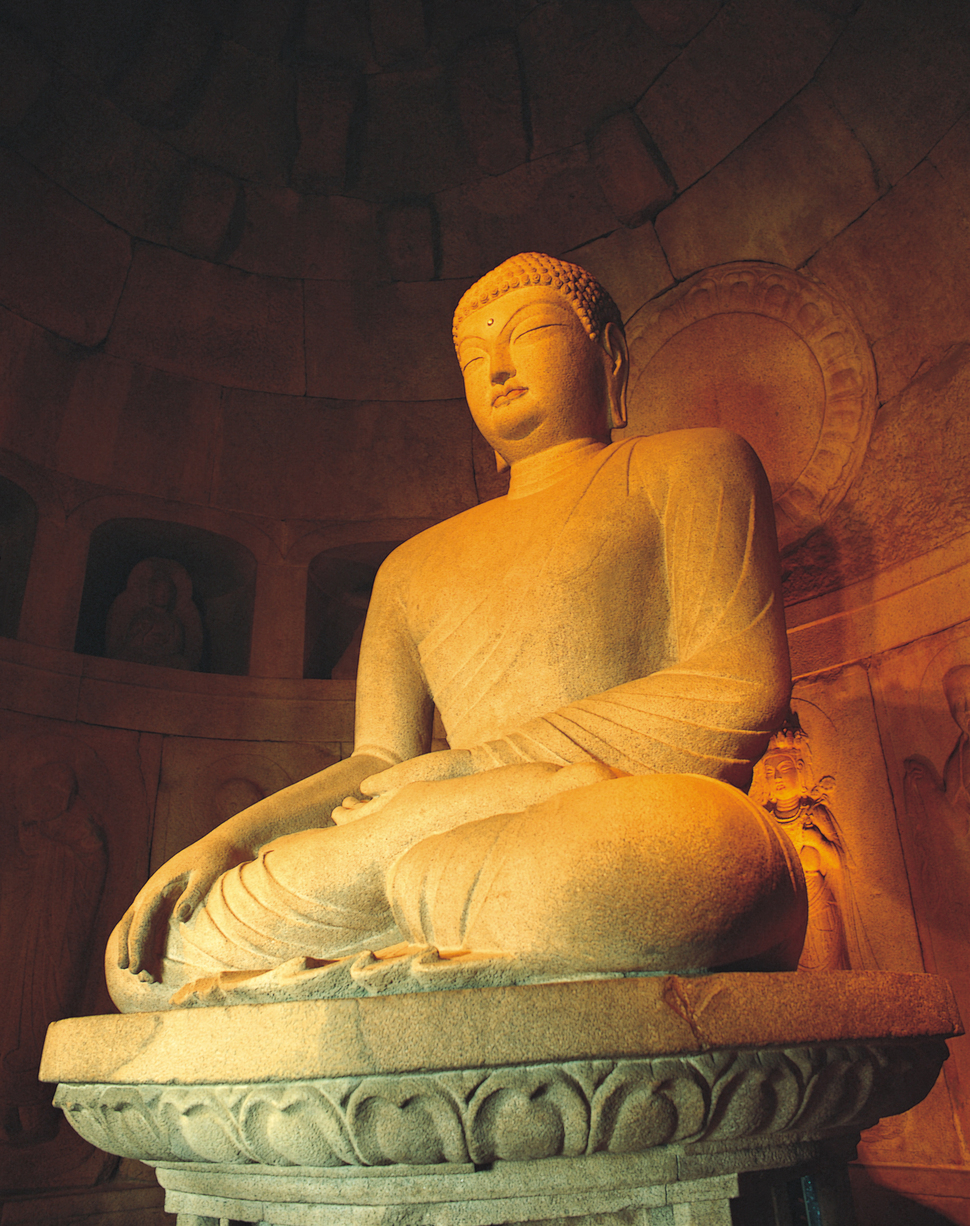[Oct] Gyeongju, a city steeped in history of Silla
Date Oct 21, 2022
 A night view of Donggung Palace and Wolji Pond, a restored secondary palace and artificial pond in Gyeongju, Gyeongsangbuk-do Province, capital of the Silla Kingdom
A night view of Donggung Palace and Wolji Pond, a restored secondary palace and artificial pond in Gyeongju, Gyeongsangbuk-do Province, capital of the Silla Kingdom
Gyeongju in Gyeongsangbuk-do Province was the capital of the Silla Kingdom from 57 BCE to 935 CE. The ability to maintain a capital in one place for nearly a whole millennium is not a common feat in ancient history. Such an existence has enriched the cultural and historic legacies of Gyeongju and the surrounding area.
The city is home to relics and cultural assets left by the people and royal families of Silla. Almost any route will take you past the historic locations, official National Treasures and UNESCO-designated World Heritage sites that generations of Koreans have grown up seeing in textbooks. That is why the entire city of Gyeongju is called a “museum without a roof.”
 Cheomseongdae Observatory in Gyeongju, Gyeongsangbuk-do Province, which is believed to have been an astronomical observatory during the Silla Kingdom (Courtesy of Gyeongju Tourist Attractions Images Download System)
Cheomseongdae Observatory in Gyeongju, Gyeongsangbuk-do Province, which is believed to have been an astronomical observatory during the Silla Kingdom (Courtesy of Gyeongju Tourist Attractions Images Download System)
Historic sites of Silla
One of Korea’s three ancient kingdoms at the time of its founding, by 676 CE, Silla had conquered its two rivals Baekje and Goguryeo. Unified Silla maintained control of nearly the entire Peninsula for just over two and a half centuries. Throughout Silla’s rule, Gyeongju flourished as the capital of the kingdom.
It’s almost impossible not to notice small, hilly mounds when walking around Gyeongju. These are actually the tombs of Silla’s rulers. The Tumuli Park Belt comprises three groups of 23 royal tombs, which were inscribed on UNESCO’s World Heritage list in 2000 together with the four other Belts that make up the Gyeongju Historic Areas.
Numerous artifacts and royal items, including exquisite ornaments made of gold, glass and ceramics, were excavated from the tombs as well as intricate paintings like the flying horse “Jangni Cheonmado” that adorned the side of an entombed saddle.
Another popular site is the Wolseong Belt. One of its most famous scenes comes out at night: the well-lit reflection of the secondary palace Donggung in the artificial pond Wolji. Both the palace and pond were constructed in the 7th century as a residence for the crown prince and a site for royal banquets. Restoration began in the 1970s. Day or night, Cheomseongdae Observatory, National Treasure No. 31, draws attention for its stately beauty and proof of Silla’s advanced level of architecture and astronomy.
The Gyeongju Historic Areas hold three more belts: Mount Namsan Belt features hiking trails that run beside hundreds of Buddhist statues and carvings; Hwangnyongsa Belt contains Bunhwangsa Temple and the ruins of Silla’s largest Buddhist temple, Hwangnyongsa; and Sanseong Fortress Belt highlights the ancient kingdom’s fortifications.
 The Buddha at the center of Seokguram Grotto in Gyeongju, Gyeongsangbuk-do Province. Both the Grotto and nearby Bulguksa Temple are on the UNESCO World Heritage list. (Courtesy of Gyeongju Tourist Attractions Images Download System)
The Buddha at the center of Seokguram Grotto in Gyeongju, Gyeongsangbuk-do Province. Both the Grotto and nearby Bulguksa Temple are on the UNESCO World Heritage list. (Courtesy of Gyeongju Tourist Attractions Images Download System)
Essence of Buddhist art
Seokguram Grotto and nearby Bulguksa Temple were placed on the UNESCO World Heritage list in 1995. They were built in the eighth century on Tohamsan Mountain, about 3 km south of Gyeongju.
While most grottos are carved out of existing caves, Seokguram was made artificially through meticulous planning and innovative construction that created a domed interior made of granite that is perfectly aligned to greet the first rays of sunlight at the winter solstice. Professor David Mason wrote in a Korea.net article that it “is a structure of sublime beauty embodying religious belief, science and the fine craftsmanship which flowered in that golden age of Asian art.”
It is comprised of an antechamber, corridor and rotunda. A 3.4-meter-high sitting Buddha carved from white granite is enshrined in the center of the rotunda, surrounded by “a noble pantheon of divinities symbolizing Buddhist philosophy and aesthetics,” according to Mason. The grotto was scientifically engineered in a way that prevented moisture and wind from damaging the portrayals and the walls for over 1,000 years. But maintenance work that relied on concrete and modern technology during Japanese colonization (1910-1945) allowed condensation to enter and damage the artifacts. Visitors must now view the statue from behind a glass partition set up in 1976 to protect the cultural asset from further damage.
Bulguksa Temple with its six National Treasures shows the essence of Buddhist art. Two of its most famous Treasures are the Dabotap and Seokgatap pagodas, which stand in front of the temple’s main prayer hall Daeungjeon. Dabotap, National Treasure No. 20, is well known to the public as it is featured on the 10-won coin, while the Great Dharani Sutra, the oldest woodblock printed Buddhist scripture in the world, was found inside Seokgatap, National Treasure No. 21.
Young vibes
Recently, young people have been flocking to the historic city, drawn by Gyeongju World Amusement, Hwangnidan-gil and other focal points.
Gyeongju World Amusement (KOR) opened in 1985 but underwent renovation in 2018. The theme park now features thrilling roller coasters with relatively short lines that have made it a must-visit spot for theme park aficionados.
Hwangnidan-gil is a neighborhood where small cafes and restaurants as well as souvenir and craft shops are clustered. The fashionable shops and restaurants in old buildings or traditional Hanok create an ambiance that attracts young people looking for unique locations and items to post on social media.
**If you have any questions about this article, feel free to contact us at kocis@korea.kr.**

The Ministry of Culture, Sports and Tourism's "Korea Here & Now" work can be used under the condition of "Public Nuri Type 1 (Source Indication)."




